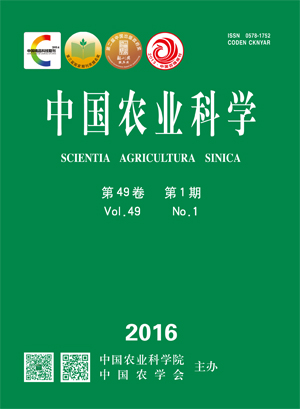-
Proteomics Analysis of Grain Position Effects During Early Developmental Stages of Maize
- YU Tao, LI Geng, LIU Peng, DONG Shu-ting, ZHANG Ji-wang, ZHAO Bin, BAI Han
-
Scientia Agricultura Sinica. 2016, 49(1):
54-68.
doi:10.3864/j.issn.0578-1752.2016.01.005
-
 Abstract
(
667 )
Abstract
(
667 )
 HTML
(
3 )
HTML
(
3 )
 PDF (3859KB)
(
1124
)
PDF (3859KB)
(
1124
)
 Save
Save
-
References |
Related Articles |
Metrics
【Objective】In order to understand the molecular mechanism of maize grain position effects, the function of differential expression proteins between upper and middle grains during the early developmental stages of maize were studied by using an approach of plant proteomics.【Method】Denghai661(DH661) with significant grain position effects was used as experimental material and planted at 90 000 plants/hm2 in a field. Upper and middle grains were harvested after flowering artificial saturation pollination at 0, 3, 6, and 12 d. The total proteins were extracted by the trichloroacetate (TCA)-acetone precipitation method, and the protein profiles were set up by two-dimensional gel electrophoresis (SDS-PAGE). The upper grain gel was compared to middle grain gel as a reference at 0, 3, 6, 12 d, respectively. The differential expression proteins between the upper and middle grains were analyzed with Image master 2D 7.0. The functions of these differentially expressed proteins were identified by matrix-assisted laser desorption/ionization time-of-flight/time-of-flight mass spectrometry (MALDI-TOF/TOF) analysis and NCBI database searching.【Result】After high density planting, grain ears were detected at more than 1000 clear spots at early developmental stages. After a comparative proteomics analysis and MALDI-TOF/TOF mass spectrometry (MS), 66 protein spots were found significantly differentially expressed between upper and middle grains during the early developmental stages, of which 52 protein spots were successfully matched in the NCBI database and the identification rate was about 78.8%. These proteins were involved in grain respiration and energy metabolism (10 spots, 19%), stress and defense (9 spots, 17%), protein metabolism (9 spots, 17%), nitrogen metabolism (6 sports, 11%), cell differentiation and proliferation (5 spots, 10%), transcription and translation (5 spots, 10%), secondary metabolism (3 spots, 6%), and other function categories. Analyzing related proteins expression differences in abundance, compared with the middle grains, most of proteins expressed abundance in the upper grains involved in cell differentiation and proliferation, respiration and energy metabolism were significantly lower at one or more of the time periods, indicating that the upper grains’ ability of endosperm cell proliferation and respiratory energy metabolism significantly reduced. Meanwhile, the upper grains’ proteins involved in stress and defense of a variety of antioxidant enzyme system, glyoxalase I, and four molecular chaperone proteins involved in protein metabolism were at a low level expression at the early development, indicating that the upper grains have weaker defense capability and less stable protein structure to stress conditions. In addition, compared with the middle grains, the upper grains alanine aminotransferase, and S-adenosine methionine synthetase 1 involved in nitrogen metabolism were down regulated within 6 to 12 days after pollination, indicating that the upper grains had a weak nitrogen assimilation ability and influence the subsequent amino acid synthesis and protein metabolism process.【Conclusion】Compared with the middle grains, the upper grains’ proteins involved in cell differentiation and proliferation are at low levels of expression and have weaker respiratory and energy metabolism vitality, resulting in the upper grains having lower sink sizes and sink activities. Additionally, when responding to oxidative stress and other stress conditions, because of the low level of expression of antioxidant enzymes and the molecular chaperone proteins, the regulatory capacity of upper grains is less than the middle grains. Differentially expression of alanine aminotransferase and SAMS also may be an important cause of grain position effects.









